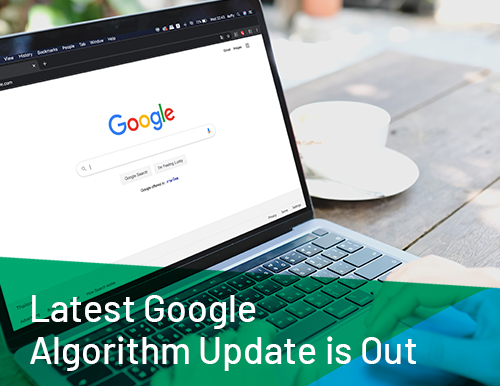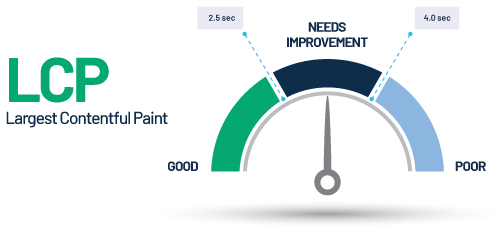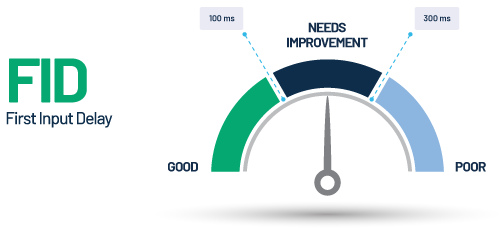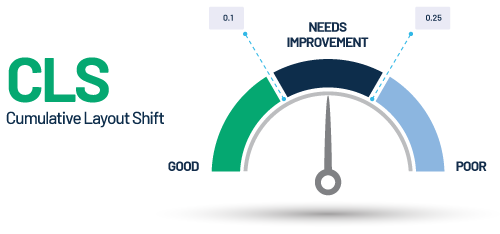What is the February 2022 Algorithm Update from Google?

Page experience ranking signals were rolled out for mobile devices back in August 2021. This time, Google is expecting the same roll out for desktop web pages to be completed by end March 2022.
What this means is that if your desktop website is not optimised by then, you may experience a fall in your website’s Google rankings.
How to Prevent a Drop in Your Website’s Google Rankings
- Understanding Google’s Page Experience Ranking
- Core Web Vitals are now a ranking factor for desktop
- How to improve my Core Web Vitals score?
- Is content still king after Google’s algorithm update?
- Prepare your website for Google’s algorithm update
Continue reading below to discover the changes Google began implementing since February 2022.
Understanding Google’s Page Experience Ranking
Google believes their users stay longer on a page when it has been optimised for user experience. While most people use search engines to obtain information, there are many ways websites can display information. This is why Google created Page Experience Ranking.
There are many factors that affect the page experience of a webpage.
Also called Page Experience Signals, these include:
- Core Web Vitals
- Mobile-friendly
- HTTPS, and
- No intrusive interstitials
Core Web Vitals are Now A Ranking Factor for Your Desktop Websites
Since the Mobile-friendly component of Page Experience Signals are not applicable for desktop websites, you need to make sure your Core Web Vitals are optimised and your web pages are served over HTTPS.
Core Web Vitals can be broken down into 3 main aspects.

LCP – Largest Contentful Paint
Well firstly, that is not a typo.
LCP measures how well the page loads when Google users first clicks through. Ideally, you want your page load speed to be within 2.5s.

FID – First Input Delay
FID measures users’ page experience through interactivity. After a user clicks on a button or link, if the page starts processing within 100ms, it will be considered a responsive page.

CLS – Cumulative Layout Shift
CLS measures how often the layout of a page shifts. A webpage with stable layout is considered more user-centric as it offers better user experience. A score of less than 0.1 is ideal.
How to Improve My Core Web Vitals Score?
Our SEO team at Webcentral has identified 6 items to help improve your Core Web Vitals score.
1. Load carousel banners using HTML
This allows the browser to load the banner quickly. If your carousel is set to auto-play, ensure that they do not cause layout shifts in your webpage.
2. Load website fonts as quickly as possible
Since fonts are what shows the information on your webpage, you want to prioritise them so that text rendering can be completed quickly.
3. Start using next-gen image formats
Instead of traditional jpeg, png or gif, consider implementing webp and avif. Next-gen image formats are smaller without compromising on quality. That said, if the image is not relevant, consider removing it altogether.
4. Consider avoiding infinite scroll layouts
Convert your infinite scroll layout to a paginated series. Ensure that there are no duplicates within your paginated series and that all individual items are still accessible to Google’s crawlers.
5. Load notices script tag in the HTML
Optimise the loading times of banners and notices by loading your cookie notice script within the HTML. This way, your banner or notice does not wait until the surrounding page has been completed rendered.
6. Customise assets based on user’s connection
While a video is a great asset, it may not load well at all on a slow device or if the user is on a slow internet connection. You can consider replacing the video with an image instead to maximise the user experience on the same page.
Is Content Still King After Google’s Algorithm Update?
While Google’s Page Experience Signals are important, they recognise that quality content is still what keeps users coming back to the page.
This means that while you should be optimising your webpages for a better Core Web Vitals score, it is important you continue providing users with the information that they want. At the same time, look through your webpages to ensure you remove any duplicate content as it is frown upon by Google.
Prepare Your Website for Google’s Algorithm Update Today
To keep your website ranking on page 1 of Google, check with your web development team to see if you can optimise your Core Web Vitals score with the recommendations above. Alternatively, if you are thinking of building a new website, consider choosing a web builder that allows you to optimise the above suggestions.
If you are a small business owner and need help, our very own web development team will be able run an audit to identify the areas for improvement based on this latest algorithm update.
Get in touch with Webcentral’s specialists today or call 1300 638 734.
You can also follow us on Facebook and Twitter for more crucial updates like this.
